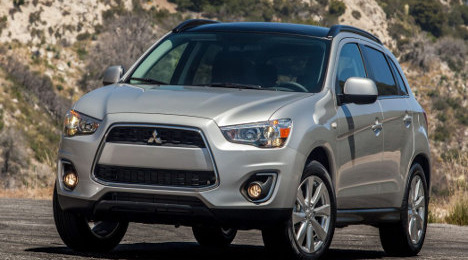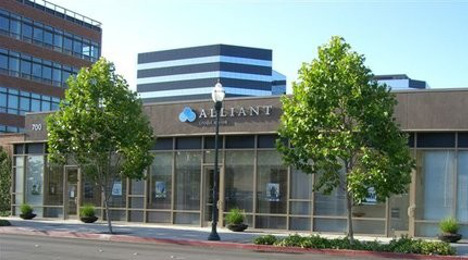Ally Financial chief executive officer Jeffrey Brown pledged that the company would maintain positive performances despite a huge volume of originations no longer coming its way from General Motors and Chrysler. Now, Brown contends he has Ally’s first-quarter results to back up his assertions.
The company’s auto financing originations for the first quarter remained strong and grew to $9.8 billion, increasing 9 percent from the previous quarter and 7 percent year-over-year. Excluding GM lease originations, Ally reported its consumer auto originations increased 27 percent year-over-year.
Moreover, new- and used-vehicle originations from dealers who recently joined Ally’s platform grew 54 percent compared to the prior-year period.
As a result, Ally’s Dealer Financial Services franchise generated pre-tax income totaling $409 million for the quarter.
“I recognized there have been a lot of questions about our reliance on key manufacture relationships and whether auto would be a growth business or not. Today’s results show we are growing and diversifying within our auto finance franchise and I have full expectations this will continue,” Brown said when Ally hosted a conference call with investment analysts on Tuesday.
“This is a business I have run for the company and I know we have the best people and platform in the industry. The business is succeeding by growing dealer relationships, penetrating deeper with our existing dealer base and originating a more diversified loan mix even as our lease portfolio declines,” he continued.
“Success we delivered in the first quarter was not by accident,” Brown went on to say. “Our auto team worked with a heightened sense of urgency and quite frankly, did a phenomenal job responding to changes in the business environment in the effect of loss of leasing in GM channel. If anything I think the GM dealers found more satisfaction by our expanded approach to help them capture volumes outside of lease.”
Coming on the heels of Ally forging an agreement with Mitsubishi, Brown reiterated his stance that Ally is geared to provide financing from all automakers.
“We also took steps with the manufacturers to ensure they know we want to help them sell more cars too. My hope is we don’t constantly fight the headline noise any longer. I'm very supportive of GM at both the dealer and manufacturer level, and I am supportive of a lot more nameplates too. The primary goal is to simply be a great finance and service provider,” Brown said.
Ally reported that its earning assets for auto finance, which are comprised of consumer and commercial receivables and leases, continued solid growth with end-of-period earning assets totaling $111 billion. Consumer earning assets totaled $78 billion, up 4 percent year-over-year, due to continued strong origination volume. The company’s end-of-period commercial earning assets were relatively flat at $33 billion for the quarter.
Furthermore Ally Insurance, which focuses on dealer-centric products such as extended vehicle service contracts (VSCs) and dealer inventory insurance, reported pre-tax income from continuing operations of $78 million in the first quarter, compared to pre-tax income of $74 million in the prior-year period. The company indicated this movement was driven by improved underwriting income resulting from lower vehicle service contract claims.
Officials added written premiums declined slightly, primarily driven by lower floorplan balances. Total investment income remained strong at $43 million in the first quarter, flat compared to the prior-year period.
The initial launch of its new, flagship vehicle service contract, Ally Premier Protection, began in March. Ally Premier Protection is slated to start its nationwide roll-out this summer and continuing through 2016, and will cover new and used vehicles of virtually all makes and models.
“Looking ahead, we are intensely focused on thoughtfully expanding our portfolio of products and services to drive revenue and returns,” Brown said. “The auto finance business remains at the heart of what we do, and we will continue to grow that business.”
CRIF Select, a division of CRIF Lending Solutions and leading provider of indirect lending solutions, recently teamed with Dealertrack’s Digital Document Services (DDS) to provide Dealertrack’s eDocs solution for digital contract processing to CRIF Select’s partner institutions and dealerships.
Dealertrack’s eDocs is a comprehensive solution for the scanning, data entry and verification of paper contracts. The partnership between Dealertrack and CRIF Select is geared to help drive greater contract and funding efficiencies for all of CRIF Select’s partners. CRIF Select will offer this solution as part of its Select Complete and Select Choice offerings.
“Same-day processing is a huge benefit for us,” said Chuck Smith, senior vice president and chief lending officer, Texas Dow Employees Credit Union, a CRIF Select client. “Reductions in response times are essential for streamlining our operations, and there’s the added bonus of shipping cost reductions.”
As Dealertrack processes more than 9 million contracts each year, both CRIF Select and Dealertrack insisted that finance companies can be confident they are benefitting from a partnership between two industry leaders as well as a dynamic and innovative solution that will bring direct benefits to their business.
Dealertrack’s eDocs can improve efficiency as digital documents are delivered quickly.
“Our partnership represents a major step forward in the quality of indirect lending services that we provide,” CRIF Select president Jeremy Engbrecht said. “This is the latest example of how we’re continuously searching for innovative ways to streamline the lending process with faster payments for dealers and superior service for our lenders.”
Kathy Kassinos, vice president and general manager of Dealertrack DDS, added, “We see tremendous opportunities for dealer and lenders to transform their businesses through digital document administration and management.
“We are committed to partnering with industry leaders, such as CRIF Select, to drive efficiencies throughout their operations, while helping to reduce costs for dealers and lenders,” Kassinos went on to say.
General Motors Financial is less than two quarters into its strategic adjustment of originating more prime paper than the finance company ever has in part to its enhanced relationship as the captive for the parent automaker.
But GM Financial is already seeing how more prime customers in its portfolio is leaving an impact on its delinquencies and its allowances for loan losses. That’s what company executives shared when they reported their first-quarter performance, which included gains in net income and consumer loan originations.
Taking into account what GM Financial reiterated is seasonality, the company said its consumer finance receivables 31-to-60 days delinquent stood at 3.4 percent of the portfolio as of March 31. That’s up just marginally from 3.1 percent the company spotted on the same date a year ago.
Meanwhile, GM Financial indicated its accounts more than 60 days delinquent came in at 1.4 percent of the portfolio at the close of first quarter both this year and last year.
And annualized net credit losses registered at the same reading on a year-over-year basis, both settling at 1.8 percent of average consumer finance receivables.
“I want to remind everybody that we do expect to see a mild decline in those rates as we go throughout 2015,” GM Financial president and chief executive officer Dan Berce said. “And going forward, we do expect to see our credit metrics, both delinquencies and losses, to show an improvement, mainly because we are originating a bigger mix of prime today as I showed you a few slides ago.
“In fact, the average FICO score for our March 2015 quarter originations were some 50 points higher than the origination mix a year ago,” Berce continued.
Along with traditional installment contracts, GM Financial is originating more leases. Operating lease originations of GM vehicles came in at $3.0 billion in Q1, up from $2.1 billion in the fourth quarter and $773 million in the first quarter of last year.
Leased vehicles totaled $8.9 billion as of March 31 as now GM Financial is the exclusive lease originator for GM vehicles. Buick and GMC came into the platform in February and Cadillac in March. Chevrolet joined the platform just before GM Financial closed its first quarter.
The company’s Q1 consumer loan originations came in at $4.1 billion, up from $4.0 billion in the previous quarter and $3.4 billion in the year-ago quarter.
GM Financial’s outstanding balance of consumer finance receivables totaled $25.6 billion when Q1 closed.
“The increases were mainly concentrated in vehicles sold by GM dealers, with big increases in loans originated on new vehicles for GM dealers as well as used vehicles. Those increases were led by the fact that our prime lending has now reached $467 million for the quarter, up from $292 million in the December quarter,” Berce said.
Meanwhile, the GM Financial’s AmeriCredit-branded business — vehicles the company finances that are sold by non-GM dealers — remained steady on a sequential basis at $700 million but slightly lower year-over-year.
“We continue to maintain strong discipline on both credit and pricing and loan structure in that business, despite the fact that competition was probably a little bit heightened in the first quarter compared to what we saw in 2014,” Berce said.
Looking over at GM Financial’s commercial business, the company’s outstanding balance of commercial finance receivables stood at $7.6 billion when Q1 finished. That figure is down slightly on a sequential basis ($8.1 billion) but up a bit year-over-year ($7.1 billion).
“The commercial business, it's pretty darn competitive and pretty price sensitive, so we are not in any way, shape, or form trying to artificially create share through price or otherwise. We are letting the business come our way because we are the captive,” said Berce of this segment of GM Financial’s business that is used by 530 dealerships.
“I think we will continue to see steady growth, that 40, 50, 60 dealer-adds a quarter. Again, for the first time we've got a full portfolio of product now, so I think that will help us competitively, whereas before we really had one hand tied behind our back,” he went on to say.
All of those performance elements combined to help GM Financial generate net income of $150 million for the quarter, up from $145 million a year earlier.
The company also mentioned it had total available liquidity of $10.9 billion as of March 31, consisting of $2.1 billion of unrestricted cash, $7.2 billion of borrowing capacity on unpledged eligible assets, $0.6 billion of borrowing capacity unsecured lines of credit and $1.0 billion of borrowing capacity on a Junior Subordinated Revolving Credit Facility from GM.
“We do believe that our growth in this business will continue to accelerate as we go into 2015 and 2016, because for the first time GM Financial now has a complete suite of products in the U.S. And our penetration in those products, whether it's U.S. lease, U.S. prime continues to increase,” Berce said.
“Again, we believe we had a very solid quarter highlighted by the successful execution of GM lease exclusivity in the U.S., which resulted in strong growth in our lease portfolio in U.S., coupled with continued growth in our prime,” he continued. “Our funding plan is on track globally. And despite the investments we have made in the balance sheet and infrastructure to achieve full captive status, we did hold earnings constant year-over-year.
“We do believe the investments that we are making now will pay off in the future. We expect 2016 and beyond profitability to increase at a nice rate from 2015. All in all GM Financial is well-positioned for future growth and increases in profitability, while we maintain a strong balance sheet and support for GM,” Berce went on to say.
Enhancing a relationship that’s already existed for several years, Ally Financial and Mitsubishi Motors North America on Monday announced that Ally will become the preferred financing source for Mitsubishi Motors in the U.S., replacing the brand’s captive finance company, Mitsubishi Motors Credit of America.
The agreement broadens the existing relationship between Ally and MMNA, continuing to make Ally’s full suite of automotive financial products and services available to all Mitsubishi dealers and their customers.
Through the agreement, Ally will provide its premium services and comprehensive product offerings, including retail and lease financing, wholesale financing, remarketing and insurance offerings, at Mitsubishi's nearly 380 dealerships across the U.S.
Officials added Mitsubishi dealers will also be able to leverage Ally’s education and training programs, customized marketing benefits and its Dealer Service Center, available seven days a week.
“Ally is committed to the success of our OEM and dealer relationships, and is continually looking for opportunities to strengthen those interactions with premium product offerings, best-in-class service and innovative ideas,” said Tim Russi, president of auto finance for Ally.
“We are pleased that Mitsubishi Motors North America has chosen to place its trust in Ally to support its retail sales growth plans and improved customer experience,” Russi continued.
The agreement with Ally is part of a number of initiatives that Mitsubishi Motors is undertaking as it grows its brand and continues to deliver outstanding sales momentum in the United States. Mitsubishi Motors just introduced its new design language concept with the world premiere of the new 2016 Mitsubishi Outlander at the New York International Auto Show to critical acclaim.
More than an appearance change, the new 2016 Outlander has received a complete makeover with a heavy emphasis on driving and ride quality by implementing over 100 improvements to the model from the previous year.
"Mitsubishi Motors has seen resurgence in sales with five quarters of year-over-year sales increases. We have accomplished this by bringing new models to market and, in large part, thanks to a loyal dealer network that has stayed with us during good times and bad. We are excited about our new models and the promise they bring," said Don Swearingen, executive vice president MMNA.
“As we pursue our growth plans in this dynamic landscape, we are pleased to have a financial partner like Ally that can support us with the products and services that our dealers need and that will be integral to our success,” Swearingen went on to say.
For any industry observers who question whether or not Consumer Portfolio Services grew as much as it should have during the first quarter, chairman and chief executive officer Brad Bradley reiterated the strategy the company utilizes.
During the first quarter, CPS purchased $233.9 million of new contracts, an increase of 23.2 percent compared to $189.9 million purchased during the same quarter a year earlier. The company's managed receivables totaled $1.726 billion as of March 31, an increase from $1.644 billion as of Dec. 31 and $1.295 billion as of March 31 of last year.
“Since we’re not, we never have been, and never will be, the people that chase the crowd, our business grew but not to the extent we might have thought and as what used to be the big first quarter,” Bradley said during a conference call after CPS released its Q1 financial report.
“Again we’re buying what we want to buy. We’re not buying because we have to buy. I think that’s something I’ve said in several different conference calls, and it’s certainly worth repeating,” Bradley continued according to the transcript posted by SeekingAlpha.com.
As far as the paper that already is in the portfolio, CPS indicated annualized net charge-offs for the first quarter stood at 6.64 percent of the average owned portfolio as compared to 5.54 percent for the first quarter of 2014.
The company’s delinquencies greater than 30 days (including repossession inventory) ticked up to 6.86 percent of the total owned portfolio as of March 31 as compared to 6.33 percent as of the same date a year earlier.
A year ago, CPS didn’t post a tremendous spike in originations during Q1 when tax refund money is typically available. Rather, the company’s most notable growth came during the second quarter when commercial banks and other institutions backed off a bit in their aggression for paper, according to Bradley’s assessment.
“We had very significant if not enormous growth during the summer. Whether that’ll happen again, we’re not sure,” Bradley said.
“We’re out here to grow and take advantage of the market as best as we can,” he continued. “We’re going to buy everything we know that fits our model and is what we’re supposed to buy.”
Several other times during the call, Bradley also referenced the strategy employed by Wells Fargo, which stated earlier this year it was capping how much subprime paper it was originating. Wells Fargo led the industry in overall market share of auto financing as well as for used-vehicle financing, according to Q4 data available from Experian Automotive.
“We’re big fans of them. We think they’ve done a wonderful job,” Bradley said of Wells Fargo. “They’re an enormous player and not a bad guy to be in the same neck of the woods with, and so, we can say we do what they do. That’s a very good thing. Certainly, we are trying to maintain our credit discipline and buy what we are supposed to buy rather than is buying a bunch of paper.”
Overall Q1 Performance
Consumer Portfolio Services reported earnings of $8.3 million, or $0.26 per diluted share, for its first quarter. The Q1 performance represented an increase of 23.8 percent in diluted earnings per share as the year-ago numbers came in at $6.7 million, or $0.21 per diluted share.
The company’s Q1 revenues climbed $17.8 million, or 26.2 percent, to $86.0 million, up from $68.1 million a year earlier. CPS’ total operating expenses for the first quarter also rose, surging to $71.2 million, an increase of $14.9 million or 26.4 percent. A year earlier, they were $56.4 million.
CPS’ pretax income for the first quarter came in at $14.7 million compared to pretax income of $11.8 million in the first quarter of 2014, an increase of 25.4 percent.
“We believe that we are off to a good start for 2015,” Bradley said. “We continue to maintain our credit and pricing discipline in a competitive environment and achieved our 14th consecutive quarter of increasing quarterly earnings.
“The weighted average effective coupon of the notes from our 2015-A securitization was slightly less than that of our 2014-D transaction and we continue to see improvement in our operating leverage,” he added.
“Our core operating expenses annualized as a percentage of our average managed portfolio decreased to 5.8 percent for the quarter, the lowest rate since the first quarter of 2010,” Bradley went on to say.
While acknowledging there are some murky points about the latest U.S. employment trends that could concern finance companies and their origination departments, Manheim chief economist Tom Webb explained how managers can focus on the most important elements that can keep the contract current and money flowing through receivables.
During his quarterly conference call this week, Webb first conceded there are three indicators of the labor market “that are, let’s say, less than robust.” That group included:
— Full employment still not getting back to its previous peak yet.
— Wage and salary growth being what Webb called “mediocre” at about 2 percent.
— A large number of people being employed part-time involuntarily.
“But the biggest benefit from the lenders is the fact that there is a lot more job stability out there,” Webb said. “If you look at initial jobless claims, the data adjusted for employment would suggest to you that if a person is employed full-time today, the odds of the person losing that job is less than it’s ever been.
“So that stability certainly provides the consumer with some confidence, but it also should provide the lender with some confidence because that’s one of the primary reasons for a default — a job loss,” he continued.
Among the unemployed, the U.S. Bureau of Labor Statistics (BLS) reported the number of new entrants decreased by 157,000 in March and is down by 342,000 so far this year.
“I think the stability numbers are looking very, very good,” Webb said.
Furthermore, BLS highlighted that there were 5.1 million job openings on the last business day of February. While that reading is little changed from January, this figure also was the highest level of job openings since January 2001.
“The numbers that came out in terms of job openings also are very strong,” Webb said.
Tax Season Update
Also during the call, Webb touched on this year’s tax season, which he described as “fairly muted this year.”
According to the IRS data available through March 27, federal refunds softened by 1.1 percent or $2.3 billion year-over-year.
“As we’ve seen for a couple of years, the seasonal impact of these monies is less than what it used to be, primarily because a lot of dealers are using the down-payment deferral programs and actually booking sales in the fourth quarter of the year as opposed to relying solely on the traditional tax season,” Webb said.
However, Webb isn’t ready to declare that these sales programs will diminish the impact of tax season entirely.
“I still think it will be extremely important just because it does represent a nice chunk of change to run a household that always in search of that down-payment money,” Webb said.
“And in that tax refund money, that’s just aggregate numbers for everybody. It’s important to note how it’s distributed,” he continued. “As you know, the used-vehicle market is primarily supported by that earned income tax credit. There proposals among bipartisans to increase that program in future years so those monies could grow as opposed to just any part of the tax refund base. That certainly would be supportive to a more pronounced shift in terms of vehicles sold at auction.”
CarMax Auto Finance is comfortable enough booking subprime paper that it’s going to continue the practice into another fiscal year.
Through the close of its 2015 fiscal year, CarMax Auto Finance originated $72.2 million of receivables through its test of financing subprime loans; a pilot program that started last January. During the fourth quarter of its most recent fiscal year, CarMax booked $15.5 million in subprime loans with customers who typically would be financed by its third-party subprime providers.
CarMax executive vice president and chief financial officer Tom Reedy indicated the company plans to extend this subprime program test at a similar rate of originations while continuing to evaluate the performance of these loans. The company had an original target of booking $70 million in loans during a fiscal year.
“Recall that our primary goal for this investment was to gain knowledge regarding this space, and we expect these learnings will prove invaluable,” Reedy said when CarMax conducted a conference call to share its Q4 and full fiscal year financial report.
“While performance to-date is in line with our expectations, we believe allowing the receivables to get deeper into their life, including maturing through a full tax season, will better equip us to assess our long term strategy,” Reedy continued according to the call transcript available from SeekingAlpha.
“On average, the terms of these contracts is nearly 70 months, and at fiscal year end, the average time on our books for loans is less than seven months,” Reedy went on to say. “We are comfortable continuing to originate at the current target volume which is 5 percent of CarMax's subprime sales or a little less than 2 percent of CAF originations.”
The subprime originations helped the CarMax finance company’s income rise by 11.8 percent to $90.4 million during Q4, driven by an increase in auto loan receivables, partially offset by a lower total interest margin. For the fiscal year, CAF income climbed 9.3 percent to $367.3 million.
The company indicated CAF income continued to benefit from favorable loss experience. Average managed receivables grew 17.8 percent to $8.30 billion.
Officials added the total interest margin, which reflects the spread between interest and fees charged to consumers and its funding costs, declined to 6.3 percent of average managed receivables in the most recent quarter from 6.6 percent in last year’s fourth quarter.
CU Direct Connect (CUDC), which provides indirect auto lending services to credit unions and dealers, recently launched a program with Alliant Credit Union, based in Chicago.
With CUDC’s expansion outside of Colorado, company management called Alliant a valuable partner, helping the firm support its larger dealer partners.
“We are thrilled to welcome Alliant Credit Union into the CUDC program as they bring a new level of support and service to our dealer partners both inside and outside of Colorado,” said Blair Korschun, CUDC president and chief executive officer.
“The CUDC expansion began in 2014 into Wyoming, and now with Alliant’s partnership, we will grow further in Arizona with plans for additional states in the future,” Korschun continued.
As the seventh largest U.S. credit union based on assets and deposits, Alliant serves more than 280,000 members nationwide.
“We are excited to partner with CU Direct Connect to expand our auto loan portfolio through the indirect channel, Alliant vice president of consumer lending Jeremy Pinard said.
“CUDC’s extensive dealer network and indirect lending expertise are a great complement to Alliant’s broad member base and lending model,” Pinard added.
To learn more about the CUDC program and becoming a credit union or dealer partner, visit www.CUDirectConnect.com.
Larry Dixon, senior manager of market intelligence at NADA Used Car Guide, dissected the possible storm cloud building that could rain on the auto finance parade that’s been marching nicely for more than four years now.
While outstanding auto receivables haven’t passed the $1 trillion threshold, Dixon referenced Federal Reserve data that shows student loan debt already reached $1.15 trillion in the fourth quarter last year, up 7 percent from a year earlier and a “whopping” 111 percent higher than Q4 of 2007 when the figure stood at $548 billion.
Dixon calculated that student loan debt exceeded auto debt by 21 percent at the end of last year, and “the ongoing increase in college loan balances could play a role in dictating demand for new and used autos in the future,” he added in a blog post.
While there appears to be some possible turbulence on the credit horizon because of student loans, Dixon maintained that current auto finance conditions are on “stable” ground.
“The below-prime share of originations is reasonable, delinquencies are still low and lenders and consumers are eager to do business with one another,” Dixon said.
Dixon acknowledged some market negatives, however, elaborating on a point Manheim chief economist Tom Webb mentioned, too.
“While rates remain near historic lows today, they will be on the rise ― albeit at a slow pace ― before too much longer,” Dixon said. “Higher rates along with faster depreciation and longer loan terms will negatively affect equity position.
“In addition, the rise in outstanding debt, buoyed in part by the growing number of vehicles financed, means lenders have more skin in the game than they did a few years ago,” Dixon continue. “This places more cash at risk should borrowers default.”
With all of these factors combining together, Dixon discussed what might happen next, asking whether consumers “saddled” with college debt be forced to buy more inexpensive new vehicles, or will they gravitate toward pre-owned ones?
“While we’ll probably have to wait and see how this one plays out, we can say with greater confidence that college debt, which is now second in size to mortgage debt, will have an impact on spending,” Dixon said.
“All in all, a favorable credit environment should continue to help fuel auto sales for some time to come; however, it would probably be wise for lenders to pay keen attention to collateral risk and portfolio performance today to mitigate future liability,” he continued.
“As time management guru Alan Lakein once said, ‘Planning is bringing the future into the present so that you can do something about it now,’” Dixon went on to say.
TrueCar formed a partnership with LendKey on Monday to launch an integrated vehicle buying and financing program.
The companies explained this partnership will give consumers insight into pricing data and access to guaranteed savings as well as the ability to secure pre-approved financing automatically before visiting a dealership.
The new platform can allow consumers to get a guaranteed savings certificate off of manufacturer's suggested retail pricing (MSRP) from TrueCar Certified Dealers and immediately get a pre-approved financing certificate from a local financing using LendKey's online lending platform in minutes online versus hours in person at the dealership.
“Consumers are increasingly pricing cars online before visiting a dealership and now, for the first time, they will be able to receive quick, transparent and accurate information about auto loans before stepping foot into a dealership,” LendKey chief executive officer Vince Passione said.
“This partnership allows us to combine TrueCar’s upfront pricing with LendKey’s pre-approved financing from our lender clients to make the process of buying a car more seamless for consumers,” Passione continued.
TrueCar co-founder and executive vice president of partner development Jim Nguyen explained this partnership with LendKey provides a great opportunity for both consumers and finance companies to deliver a better vehicle-buying experience.
“Nearly 85 percent of car purchases today require financing, and we believe that consumers will find this to be a great way to purchase their new car,” Nguyen said. “LendKey has established relationships with hundreds of credit unions and banks to develop an online loan process that is designed to be simple and transparent.”
Aspire Federal Credit Union is one of the first financing outlets to launch the new integrated platform Tom O’Shea is CEO of the institution based in Clark, N.J.
“We want to make it simple for our members to purchase a car, and finalizing both pricing and financing before going to the dealer makes it easy for them to do so,” O’Shea said.
“We have been offering a car buying service powered by TrueCar to our customers and by extending this to integrate with LendKey’s online loan platform, our members will have everything in hand before they step into a dealership and let them speed up the entire process,” he went on to say.
More information about the platform is available at www.lendkey.com/autoloans.












